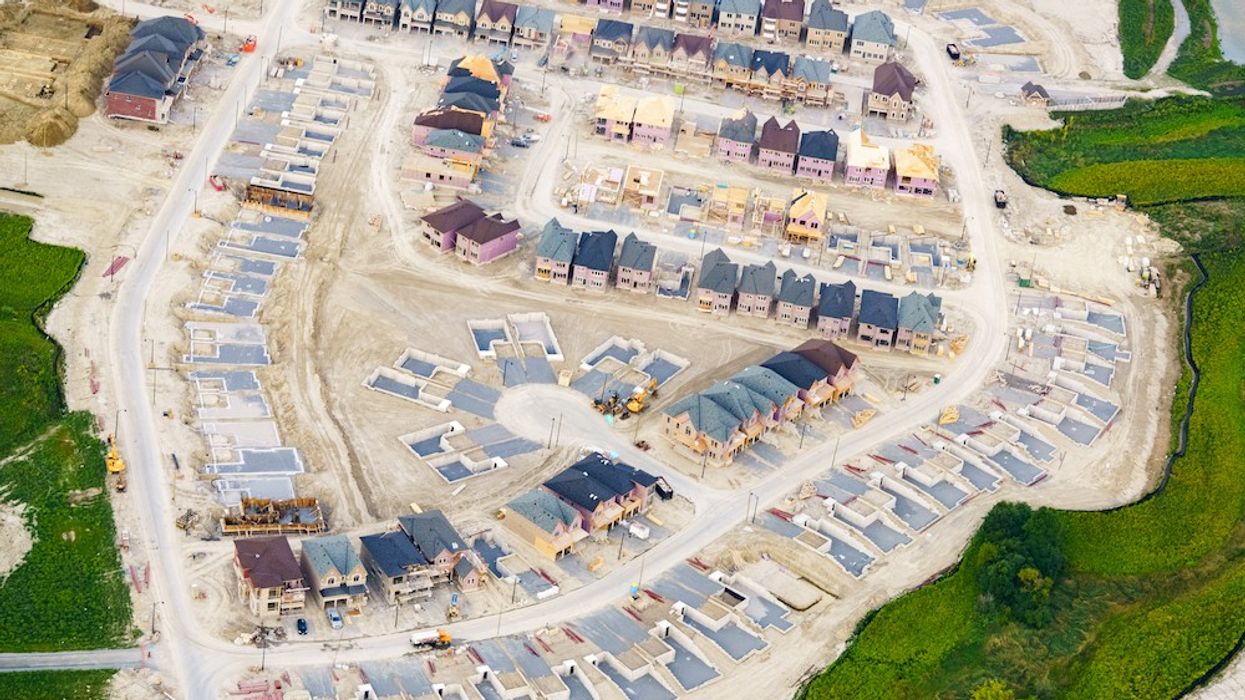The housing supply and affordability crisis is big news these days – and rightly so. Without adequate housing, individuals and families will end up leaving our cities and our economy will suffer.
One big question is how many homes need to be built every year to make them affordable. Another is how many can we build and how quickly.
A couple of years ago, Ontario set a target of building 1.5 million homes by 2031, which was admirable and based on demographics and peer reviewed research. Disturbingly, the figure is likely now much higher.
According to modeling done by the Canadian Centre for Economic Analysis, Ontario needs 1.78 million homes over 10 years while the Canada Mortgage and Housing Corporation reckons 1.85 million homes are needed to get prices down to 2003-04 levels when the average house cost $500,000.
Those are hefty increases from the number we’re presently building.
Last year, the residential construction industry in Ontario built about 96,000 new units. Traditionally, the industry has averaged about 75,000 units a year. To reach the provincial target alone, we’d have to essentially double our average annual production. Nationwide, financial services firm Desjardins figures that the country needs 100,000 more annual housing starts per year.
Either way you cut it then, we are not cutting it.
However, I do believe that, given the right tools and circumstances, the residential construction industry can meet the challenge and boost production to meet the targets.
But we must play to perfection. In other words, we really need to turn on all the taps. Unfortunately, we are not there yet.
We must focus on offsite construction, modular housing, panelized housing, and we have to get immigration right as we need the proper types of skilled trades to build the housing.
We must also remove the stigma around the trades and get parents and educators to realize that the trades are a great career option. Not everybody wants to pursue a post-secondary education. The trades are perfect for those who prefer to work with their hands – and they get to earn while they learn.
Additionally, we must clear pathways for young people, women and individuals from underrepresented groups to get into the trades.
And we must remove the barriers that prevent new housing from getting built in a timely fashion. The approval processes have not improved, and urgent action is needed on this front now, not tomorrow.
Meanwhile, for the situation to truly change, it must be understood that the residential development industry and builders are not the enemy. They are the partners for a solution.
If we are able to do and accomplish all these things, I believe we can build the homes that are needed.
I discussed this very subject on a podcast with Marlon Bray, Senior Director of Cost Consulting at Altus Group, and Ray Wong, Market Intelligence Leader at the company.
Many of the hurdles preventing the industry from building more homes are systemic.
In the Toronto area, for example, we have a growth plan that ignores demographics to a large extent. The other problem is the approvals process itself. We’ve calculated there could be up to 45 different government bodies and agencies involved in the decision-making process on a new project. In other words, there are simply too many cooks in the kitchen of the housing market.
To put this in perspective, Singapore, which is considered the most advanced jurisdiction in the world on building approvals, has 12 government bodies and agencies involved in the approvals process.
The more complex the approvals process, the slower it moves. As a result, it takes much longer than it should to get a project approved.
We must adopt technology and more modern systems and processes to speed up the approvals process, embrace collection of quality data to provided for better forecasting, decision-making and market agility, and run simulations to accurately gauge the consequences of actions being taken.
Another critical issue is the plethora of fees, levies and taxes imposed on new housing. The sector is severely over-taxed and regulated and is creating bottlenecks. We are taxing housing like we do alcohol or tobacco.
A report by the Canadian Centre for Economic Analysis found that taxes, fees and levies on a new house or condo now account for 31% of the cost. So, for example, if you’re buying a $1M home, $310,000 goes to taxes, fees and levies. Development charges on a two-bedroom condo in Toronto a decade ago were about $8,000 but today they’re $88,000. These disproportionate increases have inflated prices which are then handed down to owners and renters.
The biggest beneficiary of that tax system is the federal government, which gets about 39% of the loot. But in terms of public infrastructure investment in Ontario, they only account for 7.1%. The point here is that billions of dollars are going every year to the feds in new housing taxes but there is little return.
As the affordability problem intensifies and local residents and immigrants realize they can no longer live in the GTA, we are losing talent to Alberta and Atlantic Canada in droves.
There is a glimmer of hope, though.
The issue has been elevated and there now appears to be a great deal of discussion centered around the housing issue. More importantly, there appears to be greater thought going into how to put in place plans to fix the situation. However, implementation, now more than ever, is key.
The housing crisis didn’t materialize overnight. But over the last few years, all three levels of government have come to the realization that action is needed. How quickly they respond and what specific actions they take to boost housing and speed up the approvals process will be key.





















